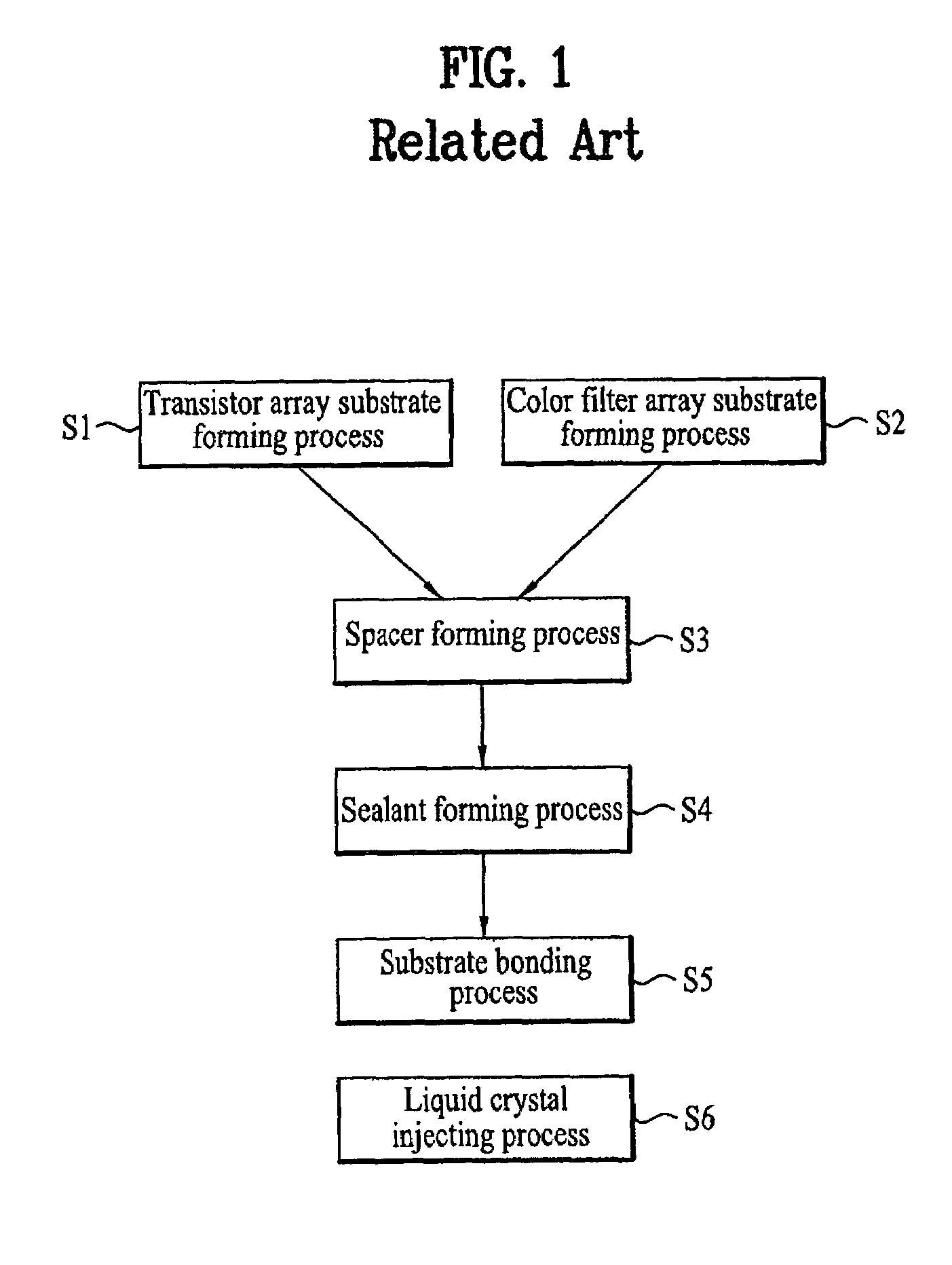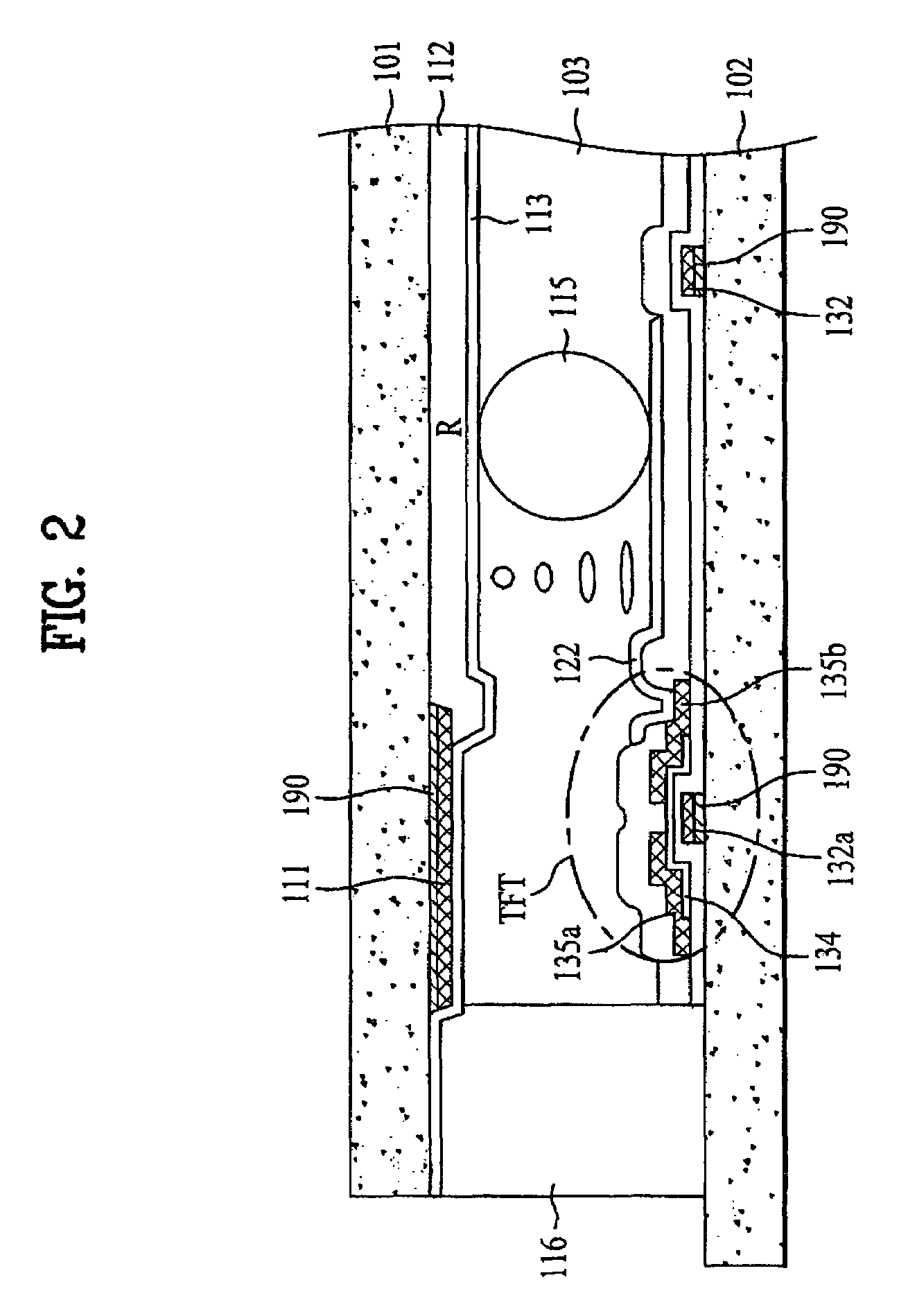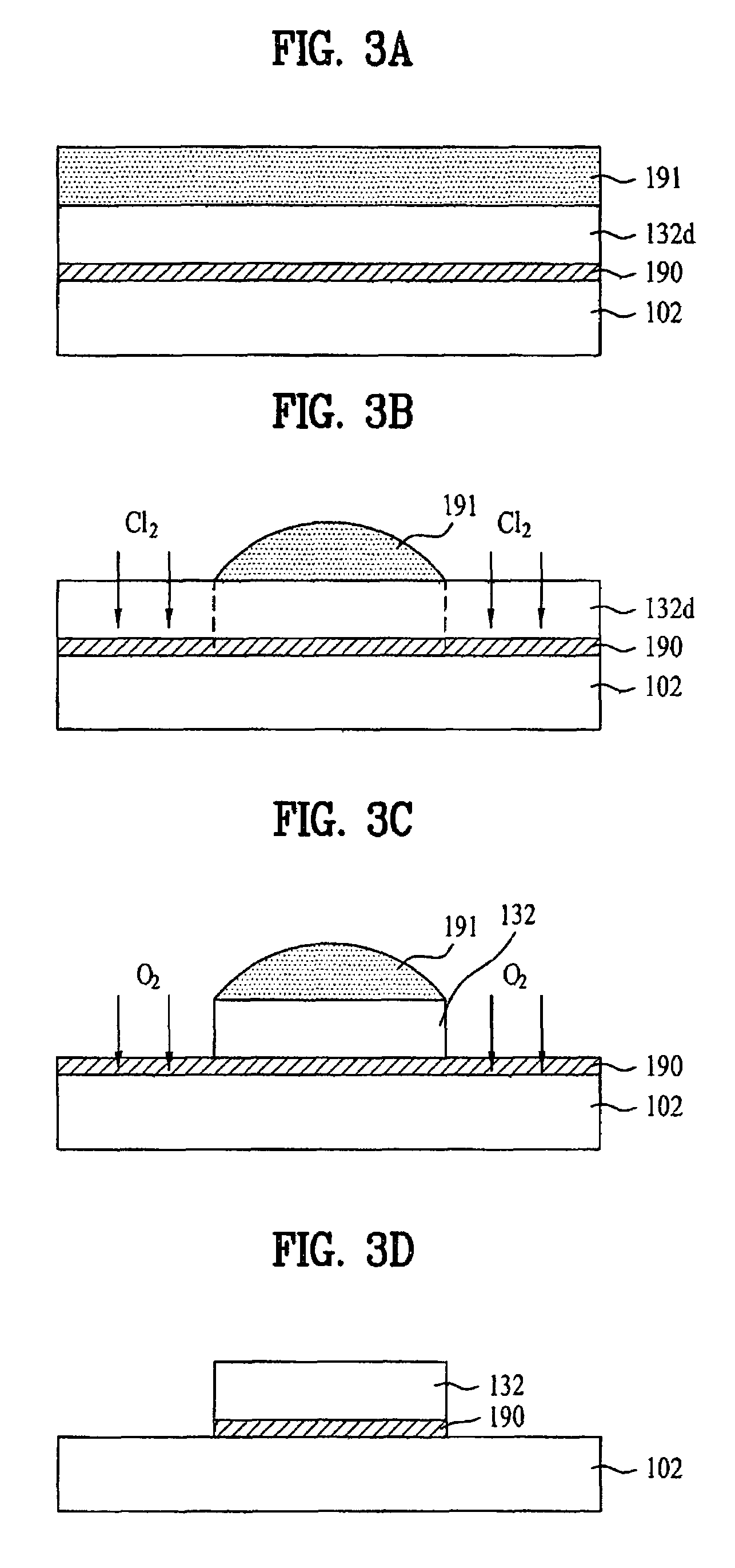Liquid crystal display device and method for manufacturing the same
a technology of liquid crystal display and liquid crystal, which is applied in the direction of photosensitive materials, instruments, photomechanical equipment, etc., can solve the problems of poor adhesion to the substrate, peeling off from the substrate, and uneven distribution of spacers, so as to reduce the generation of process errors, improve the reliability of the device, and reduce the effect of process time and cos
- Summary
- Abstract
- Description
- Claims
- Application Information
AI Technical Summary
Benefits of technology
Problems solved by technology
Method used
Image
Examples
first embodiment
[0039]FIG. 2 is a sectional view of a liquid crystal display device in accordance with a first embodiment of the present invention, and FIGS. 3A to 3D are sectional views illustrating a method for manufacturing the liquid crystal display device in accordance with the first embodiment of the present invention.
[0040]As shown in FIG. 2, the liquid crystal display device of the first embodiment includes first and second substrates 102 and 101 opposing each other, a sealant 116 that bonds the first and second substrates 102 and 101 to each other deposited along the edge of the first substrate 102 except for a liquid crystal inlet, spacers 115 that maintain a cell gap between the first and second substrates 102 and 101 and a cell gap at the liquid crystal inlet, and a liquid crystal layer 103 filling a space between the first and second substrates 102 and 101.
[0041]Data lines (not shown) and gate lines 132 that cross each other to define sub-pixels and TFTs formed at the crossings between...
second embodiment
[0055]FIG. 4 is a sectional view of a liquid crystal display device in accordance with a second embodiment of the present invention, and FIGS. 5A to 5D are sectional views illustrating a method for manufacturing the liquid crystal display device in accordance with the second embodiment of the present invention.
[0056]As shown in FIG. 4, the liquid crystal display device of the second embodiment includes first and second substrates 202 and 201 opposing each other, a sealant 216 that bonds the first and second substrates 202 and 201 to each other deposited along the edge of the first substrate 202 except for a liquid crystal inlet, spacers 215 that maintain a cell gap between the first and second substrates 202 and 201 and a cell gap at the liquid crystal inlet, and a liquid crystal layer 203 filling a space between the first and second substrates 202 and 201.
[0057]Data lines (not shown) and gate lines 232 that cross each other to define sub-pixels and TFTs formed at the crossings betw...
third embodiment
[0072]FIG. 6 is a sectional view of a liquid crystal display device in accordance with a third embodiment of the present invention and FIG. 7 is a sectional view illustrating a method for manufacturing the liquid crystal display device in accordance with the third embodiment of the present invention.
[0073]As shown in FIG. 6, the liquid crystal display device of the third embodiment includes first and second substrates 302 and 301 opposing each other, a sealant 316 that bonds the first and second substrates 302 and 301 to each other deposited along the edge of the first substrate 302 except for a liquid crystal inlet, spacers 315 that maintain a cell gap between the first and second substrates 302 and 301 and a cell gap at the liquid crystal inlet, a polymer adhesive layer 391 interposed between the spacers 315 and a pattern of the second substrate 301, and a liquid crystal layer 303 filling a space between the first and second substrates 302 and 301.
[0074]Because the spacers 315 are...
PUM
| Property | Measurement | Unit |
|---|---|---|
| thickness | aaaaa | aaaaa |
| size | aaaaa | aaaaa |
| temperature | aaaaa | aaaaa |
Abstract
Description
Claims
Application Information
 Login to View More
Login to View More - R&D
- Intellectual Property
- Life Sciences
- Materials
- Tech Scout
- Unparalleled Data Quality
- Higher Quality Content
- 60% Fewer Hallucinations
Browse by: Latest US Patents, China's latest patents, Technical Efficacy Thesaurus, Application Domain, Technology Topic, Popular Technical Reports.
© 2025 PatSnap. All rights reserved.Legal|Privacy policy|Modern Slavery Act Transparency Statement|Sitemap|About US| Contact US: help@patsnap.com



